SOULVEDA
A Smart Ritual Experience
Transforming traditional prayer rituals with smart technology.
App Design 2024

Project Overview:
Soulveda is a thoughtfully designed mobile app developed for Cycle Agarbatti (NRR Group) to modernize prayer rituals through smart technology.
This project aimed to create an electronic-operated prayer lamp and agarbatti that users can control remotely. View Project
The app serves as an intuitive interface to manage these smart devotional products seamlessly.
Impact:
Soulveda redefines traditional prayer practices by blending spirituality with technology, ensuring convenience without compromising devotion.
Role & Duration
Lead Designer
User Research, Insights, Persona, Empathy Mapping, Information Architecture, Wireframing, Interaction, Visual design, Prototyping & testing
Feb - Sept 2024
Client: N. Ranga Rao & Sons
The House of Cycle Pure Agarbathies, Prayer Essentials and Air Care Products

Problem Statement
For many, traditional prayer rituals are a source of comfort and connection. However, the challenges of modern life, including busy schedules and distance from family, can disrupt these important practices.
Current digital tools often fail to provide the personalized and integrated experience needed to foster meaningful engagement, leaving individuals feeling disconnected from their faith.
A smart system could help bridge this gap and provide a more supportive and accessible spiritual experience.
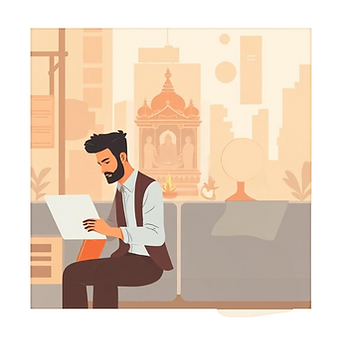
Discovery
Understanding the Business Goals (Client Perspective)
"Cycle Agarbatti wanted Soulveda to be more than just a smart prayer app.
The goal was to create a premium, aesthetically pleasing product for tech-friendly, spiritually inclined users who seek a seamless, customizable prayer experience. Key requirements included:"
Target Audience: Upper-middle-class & upper-class, aged 30-40, tech-friendly, serious about religious practices.
Positioning: Premium product, also fits in the gifting category.
Features: Customized prayers based on gotras and family lineage, remote prayer scheduling, smart ritual automation.
Business Objective: Ethically gather user data to improve future products & services.
Competitive Analysis
Research Objective
To understand the existing digital solutions in the religious and spiritual tech space and analyze their features & user experience.
The goal is to identify gaps and opportunities for Soulveda, which integrates Bluetooth/WiFi-enabled religious products with an intuitive remote management system.
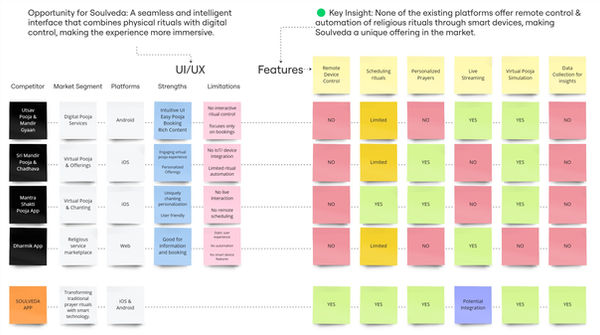
User Reviews & Feedback Trends
Common themes from user feedback on competing platforms
What users appreciate:
-
Easy access to puja services,
-
Virtual religious experiences feel engaging,
-
Customization options for mantras & prayers
What users complain about:
-
Lack of physical ritual involvement
-
Technical glitches in streaming or bookings
-
No automation or scheduling options
Key Takeaways & Strategic Insights
Market Gaps:
-
No competitor offers smart ritual connectivity.
-
Users want more automation & personalization.
-
Seamless UI/UX is needed for digital worship.
Soulveda’s Edge:
-
Smart Automation – Schedule & control rituals via Bluetooth/WiFi.
-
Personalized Worship – Custom prayers, reminders & chants.
-
Seamless Experience – Blending tradition with technology.
User Research (User Side)
"To ensure the product truly meets user needs, we conducted interviews with tech-savvy individuals who follow religious rituals.
Our findings revealed:"
User Persona
“As I’m getting old, I couldn’t manage all the works on my own as I used to do before”

“I really love those fragrance, it kind of brings calmness to my soul and mind ”

Behavioural Considerations
1. Ramesh I 60 I Male I Family I
-
Business owner
-
Highly fond of technologies
-
Likes to explore smart and new products.
He’s excited about having an IoT-based puja product as it ensures timely rituals without requiring his physical presence, making worship easier as he ages.
-
Prefers simplicity, avoiding overwhelming new tech.
-
Enjoys traditional diya cleaning and pooja rituals.
-
Concerned if IoT product meets traditional standards.
-
Worried about sourcing materials for continued use.
Behavioural Considerations
2. Sonam I 35 I Female I Single I
-
Personal hygiene expert
-
Focuses on her self-care.
-
She likes to keep her place clean and fresh.
She used a diffuser for a cleaner space, a pleasant aroma, and a touch of wellness.
-
Multiple works to do all day.
-
Couldn’t concentrate much or take good care of her house
“I wonder how much these smart devices can impact our daily life and what the future holds for us ”

Behavioural Considerations
3. Sunil I 26 I Male I Single I
-
Engineering graduate
-
Staying away from home for his work.
He surprised his religious mother in Mysore with a smart diya and agarbatti, allowing her to monitor and control them via phone, gifting it on her birthday.
-
Price considerations, whether it will be worth the money or not
-
What if I don’t like the product, is there any refund process available?
-
As it is a new product in the market, couldn’t find much reviews about it
-
How long does the wick and oil last?
“I would love to try out new products or technologies that is coming out in the market”

Behavioural Considerations
4. Anvita I 36 I Female I Married I
-
Works in IT sector.
-
Hardcore techie who likes to explore new technologies often.
-
She likes to use Smart Diya and agrabattis as it is very convenient and easy to use.
It saves her time by simplifying the pooja process while adding a wow factor.
-
What if the wiring is visible, and is it safe?
-
How we should refill the wick and oil once it's over
-
What if the size of the product is too bulky in nature
Empathy Mapping
Pain Points
-
Time Constraints – Busy lifestyles make regular rituals challenging.
-
Maintenance Concerns – Refilling oils, replacing wicks, and upkeep worries.
-
Tech Skepticism – Doubts about smart devices replacing traditional practices.
-
Usability Issues – Older users may struggle with new technology.
-
Market Awareness – Need for more reviews, demos, and trust signals.
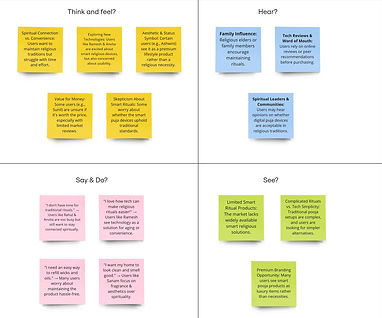
Needs & Motivations
-
Seamless Automation – Rituals without manual effort.
-
Customization – Personalized prayers, schedules, and rituals.
-
Premium Aesthetic – Visually appealing, complements home decor.
-
Ease of Use – Simple setup with minimal maintenance.
-
Remote Access – Perform poojas from anywhere.
User Stories
Final Insights

Position Soulveda as a blend of tradition & modern convenience –
Emphasizing both religious authenticity and smart automation.

Address concerns on usability & maintenance –
Through tutorials, customer support, and easy-refill solutions.
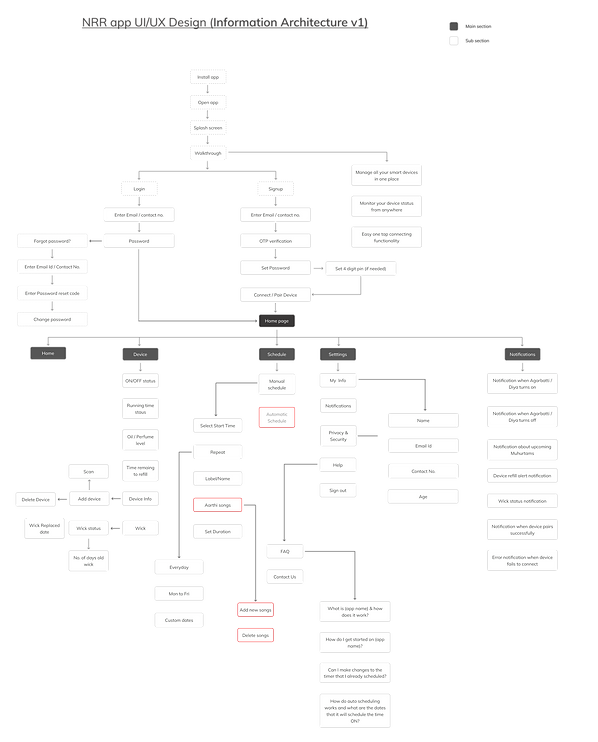
IDEATE
Information Architecture
User flows for each use case was made :
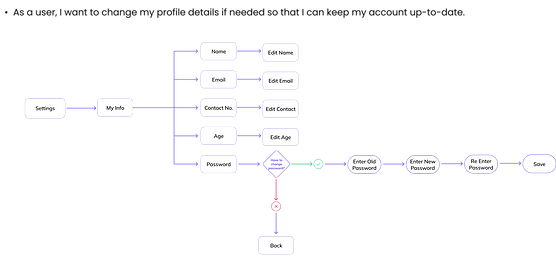
Low Fidelity Wireframes
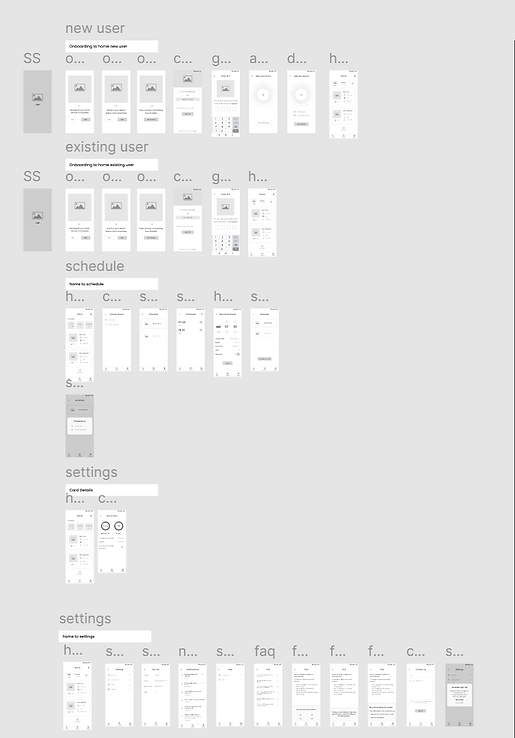
Usability test feedback
Key aspects of usability to evaluate:
Navigation, user experience & accessibility
Method: In-person
1. Login/Signup: Reducing Friction & Cognitive Load
Users feel frustrated with repeated logins and password management.
Insight: They seek convenience and security—offering OTP login and "Remember Me" can ease their frustration.
Onboarding feels like an obstacle rather than a guide.
Insight: Giving users the option to skip onboarding respects their time and different levels of familiarity.
2. Device Discovery & Connection: Clarity & Confidence
Users feel uncertain about whether the app is working during device discovery
Insight: A clear progress indicator reassures them that the app is actively searching.
Frequent reconnections feel like an unnecessary hassle.
Insight: Users expect a seamless experience—automatic reconnection reduces frustration and improves efficiency.
3. Scheduling a Ritual: Ease & Familiarity
Users feel overwhelmed by the number of details required to schedule a ritual.
Insight: A simpler, more intuitive setup (like an alarm) reduces friction and enhances usability.
Repetitive tasks feel tedious and time-consuming.
Insight: Users expect automation—introducing a "Repeat Daily" toggle aligns with their mental model of scheduling.
High Fidelity Wireframes - Iterations & Improvements
New user - Onboarding

Reduced Friction & Cognitive Load
Option to skip Onboarding
Animated ripple to indicate 'the device is actively searching'
Existing user - Login
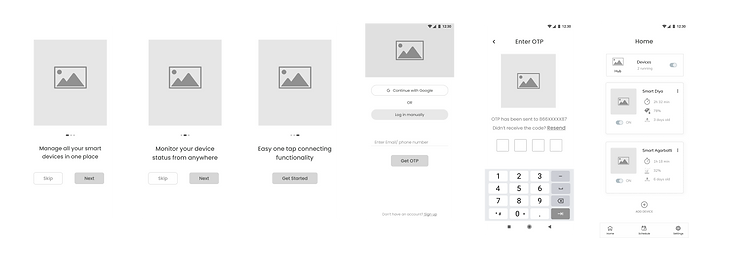
Automatic re-connection and display of connected device for existing users.
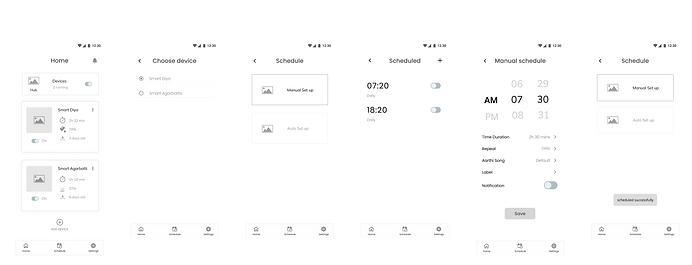
Schedule
Ease and familiarity for scheduling. Drawing parallel with the alarm / reminder UI/UX
Interface Design
Color
-
Premium
-
Aesthetically pleasing
-
Tech
-
Spiritual
F4C27F
2B2D42
D8572A
000000
60:30






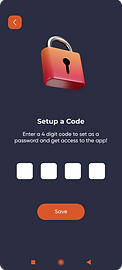
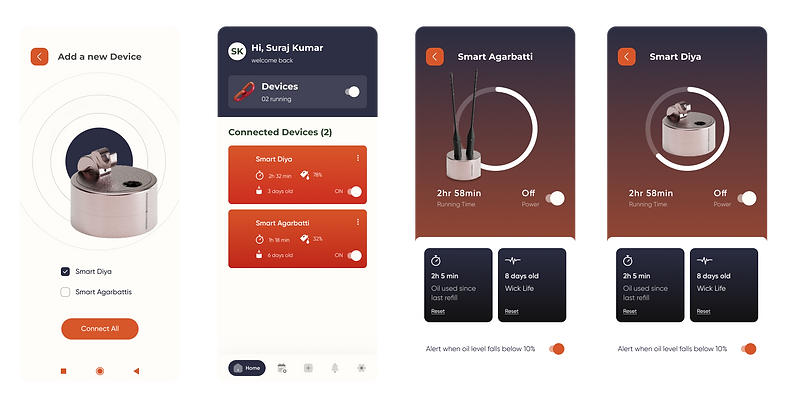
Key Takeaways
1. User-Centric Insights
Users preferred flexible ritual scheduling over fixed-time automation due to varying personal routines.
Many users were not tech-savvy, requiring a simplified onboarding experience.
Personalization (e.g., choosing specific deities, mantras, or lighting sequences) enhanced user engagement.
2. Design Challenges & Solutions
Balancing tradition with technology: Users were hesitant about automating spiritual rituals, so I incorporated manual override options and customizable rituals for comfort.
Low digital literacy among older users: Used intuitive UI patterns, voice guidance, and minimal text to improve accessibility.
Seamless device connectivity: Designed a clear step-by-step pairing process with visual cues to reduce setup friction.
3. Impact & Results
Simplified ritual automation helped users maintain spiritual practices consistently, even with busy schedules.
Enhanced personalization features led to higher engagement and user retention.
The intuitive interface reduced user errors during setup and operation, improving the overall experience.
Future Improvements
-
A voice-command feature could further improve accessibility for elderly users.
-
More visual cues and haptic feedback can enhance engagement.
-
Exploring AI-driven recommendations for personalized spiritual routines.
Tools Used
-
Adobe Suite
-
Figma
-
Miro
-
Relume Ai
-
Spline Ai
